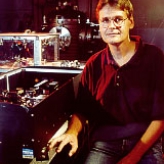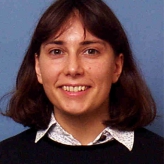Atomic & Molecular Physics
Atomic, Molecular, Optical, and Chemical (AMOC) Physics is mainly concerned with the common building blocks of the world around us (and beyond), i.e., with atoms, ions, electrons, molecules, and photons, and their mutual interactions. Of special interest are those phenomena that occur at temperatures and energies which are typical of the Earth's atmosphere, the atmospheres of other planets and comets, the atmospheres of stars, the gas found in interstellar clouds, and the ultracold regime of Bose-Einstein Condensates. Additionally, in our biophysics program, we study the dynamics and functionality of biophotonic molecules.
The efforts in the AMOC group include both experimental and theoretical programs. In contrast to big user-oriented research facilities, students involved in experimental AMOC physics have the chance to be completely in control of the actual experiment. Students get involved routinely in a variety of different technical areas including the design and construction of vacuum systems, data acquisition and analysis, laser development and computer control. Students pursing theoretical AMOC work get the opportunity to utilize and develop state of the art computer algorithms to investigate atomic and molecular interactions on modern workstations and supercomputers.
Researchers
Astrophysical Applications and Atomic and Molecular Data
The chemical and spectral modeling of astrophysical and atmospheric environments requires an enormous amount of atomic and molecular data for a variety of processes. In addition to computing some of the necessary data, mentioned above, we are also engaged in database efforts. In particular, a database of Charge Transfer reactions, relevant to astrophysical modeling, is being developed in collaboration with ORNL. Molecular line and continuum opacities relevant to cool stars and extrasolar planets are also being computed for the UGA Molecular Opacity Project.
Molecular Beam Laser Spectroscopy
Molecular radicals and clusters relevant to combustion and atmospheric chemistry are studied applying different types of high resolution multiphoton spectroscopy and infrared-ultraviolet double resonance experiments. Laser spectroscopic methods are used to prepare molecules in specific quantum states and to control their alignment and orientation.
Molecular Beam Scattering
Molecular collision processes (inelastic or reactive) are studied at the quantum state resolved level in a counterpropagating molecular beam scattering experiment. In combination with ion time-of-flight analysis, angle and state resolved cross sections and their polarization dependence are measured. The data provide new insights into energy transfer processes and reaction dynamics at the microscopic level.
Molecular Formation and Destruction
Molecules are formed in a surprising variety of astrophysical environments including interstellar clouds, cool stellar atmospheres, supernova ejecta, primordial galaxies, extrasolar giant planets, etc. To improve the modeling of these environments we calculate with quantum-mechanical techniques cross sections for their formation via radiative (spontaneous and stimulated) association and for their destruction by photodissociation. In the latter case, the photons can be provided by the interstellar UV, the intergalactic UV, cosmic background, or stellar radiation fields.
Molecular Photodissociation and Predissociation
Product distributions from the UV photolysis of stable molecules or radicals or from the infrared induced predissociation of clusters are detected through resonance enhanced multiphoton ionization processes. In these experiments, state resolved angular distributions are accessed through ion time-of-flight analysis.
Recent Publications
Excited state properties of porphyrins
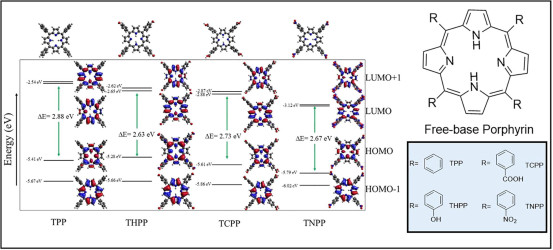
L. Hanna, E. Movsesian, M. Orozco, A. R. Bernot Jr., M. Asadinamin, L. Shenje, S. Ullrich, Y. Zhao, N. Marshall, J. A. Weeks, M. B. Thomas, J. A. Teprovich Jr., P. A. Ward: Spectroscopic Investigation of the Electronic and Excited State Properties of Para-Substituted Tetraphenyl Porphyrins and Their Electrochemically Generated Ions, Spectrochimica Acta Part A 2022, 278, 121300.
FSRS of photo-ODIBO
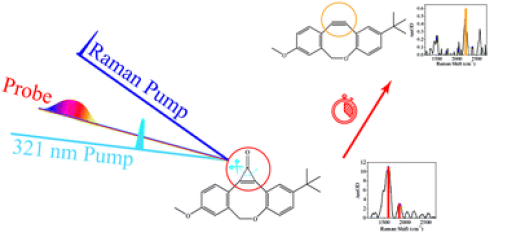
L. Shenje, Y. Qu, V. Popik, S. Ullrich: Femtosecond Photodecarbonylation of photo-Oxadibenzocyclooctyne Studied by Stimulated Raman Spectroscopy and Density Functional Theory. Phys. Chem. Chem. Phys. 2021, 23, 25637-25648.
Photodecarbonylation of photo-ODIBO
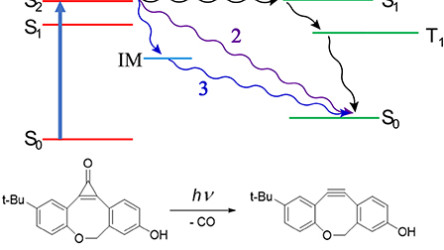
L. Shenje, W. Thompson, Z. Ren, N. Lin, V. Popik, S. Ullrich: Ultrafast transient absorption spectroscopy of the photodecarbonylation of photo-oxadibenzocyclooctyne (photo-ODIBO) J. Chem. Phys. 2021, 154, 074302.
Internal conversion and intersystem crossing dynamics of Uracil upon double thionation: A time-resolved photoelectron spectroscopy study in the gas phase.
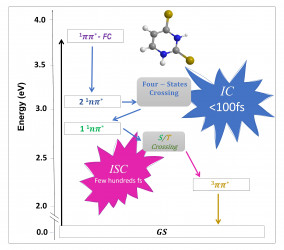
A. Mohamadzade, S.Ullrich: Internal conversion and intersystem crossing dynamics of Uracil upon double thionation: A time-resolved photoelectron spectroscopy study in the gas phase. Phys. Chem. Chem. Phys. 2020, 22, 15608.


